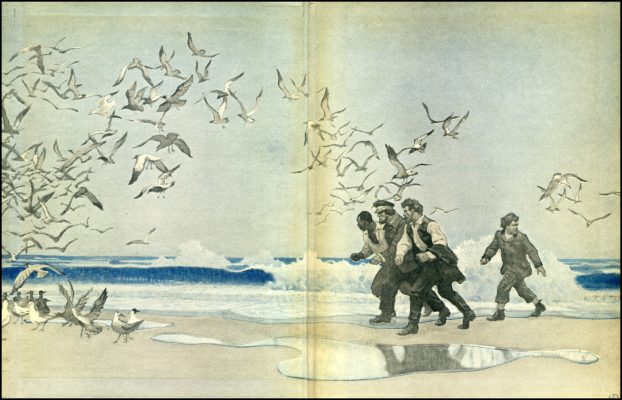I was not ashamed. Far from it. I had just read my first novel, Robert Louis Stevenson’s Treasure Island (1883), illustrated by N. C. Wyeth. Now in a new school, in a new country, with my new library card, I immediately went too far. Without a word, the librarian led me. An eyebrow lifted, yet she led me to the longest novel in the library. I still remember the sudden visible smallness of the children’s books pressed up against that gigantic orange bulb.
Already the hardback Charles Scribner’s Sons Edition of Jules Verne’s The Mysterious Island (1874) came as an art event: sculptural, conceptual – double-covered. The illustrations upon its skins came next, with the visual art offering a portal not out of the book, but into its infinities.[1] Wyeth’s pictures led me to science fiction; they also led me through it; I remember passing word by word, sentence by sentence, on that journey in which each illustration itself was a mysterious island to be reached, rested upon, understood, en route to the goal. And Verne’s The Mysterious Island would in fact explain itself. I had peeked ahead (here came shame) and already glimpsed that peculiar white-bearded authority whose words made a veritable monologue out of the novel’s end.
N. C. Wyeth, who painted that white-on-white face against an Orientalist background, saw himself as a high artist slumming it in the pulps. He joined art history in the company of Margaret Brundage and Hannes Bok, and not with Thomas Eakins and Hart Benton. With one shoe in the nineteenth century, N. C. could not understand that a work like Verne’s might open onto a more intimate relation with reality production than that which romantic theory had yet allowed the artist.




